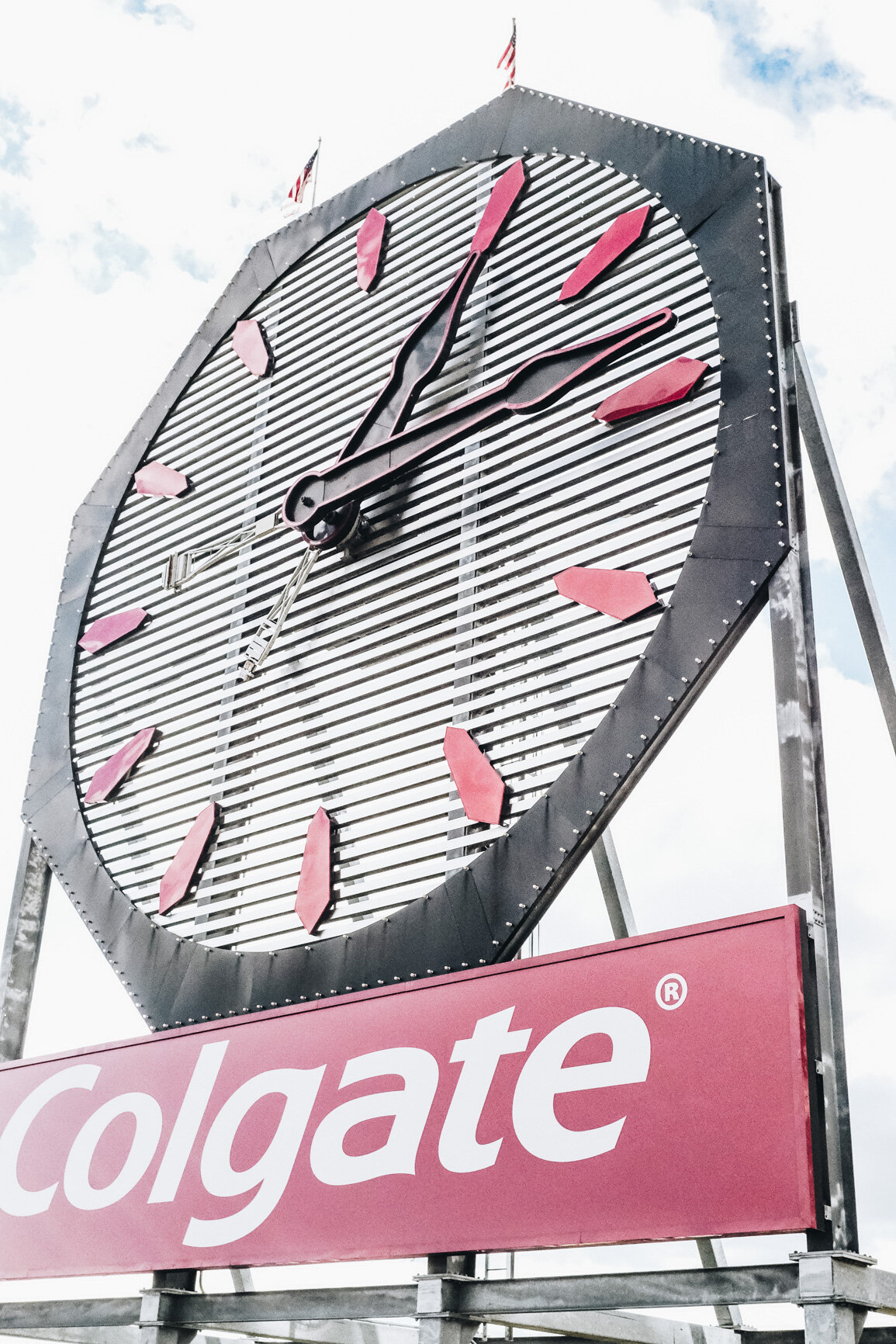Colgate Clock: Jersey City's Iconic Landmark
Overlooking the Hudson River, the Colgate Clock is reminiscent of a time when factories dominated the Jersey City waterfront. Becoming an iconic landmark to New Yorkers and a welcome sight to visitors, the octagonal clock face has been used by millions to set their watches.
First set in motion by Mayor Frank Hague on December 1, 1924, the clock represents more than just a timepiece or an advertisement to the people of Jersey City. From its vantage point on the site of the old Colgate-Palmolive Factory, its giant red neon hands accurately keep time within one minute of the correct time and are visible from miles away. It is considered to be a New York City landmark ranking alongside the likes of the Statue of Liberty, Ellis Island, and the Verrazano Bridge.
The octagonal face of the clock is 1,963 square feet and 50 feet in diameter, making it one of the world’s largest clocks. The hour hand at 20 feet long and the minute hand at 25 feet 10 inches can be seen from a great distance, helping busy New Yorkers to remain on schedule. Its design was inspired by Colgate’s product, a laundry cleanser, Octagon Soap which it was manufacturing at the time.
At the site of the original Colgate-Palmolive building, a smaller yet equally as significant clock was erected in 1908 to commemorate the company’s 100th year and was used to advertise its products. The original clock was a mere 38 feet in diameter and was illuminated by 1,607 lights at night and when it was replaced was retired to a Colgate building.
The Colgate-Palmolive Company played an integral role in the financial health and wealth of Jersey City. As a major employer of the city’s residents, it was one of the few to remain after many other industries and railroads went bankrupt. With thousands of employees in its service, the manufacturing facility on the shore of the Hudson River was such that it required its own railway system to transport raw materials and finished products between buildings as well as to the market.
After 141 years on this historic site, the Colgate-Palmolive Company had outgrown its current facility and moved its corporate headquarters to a more modern plant for its time over the six-block area of York, Greene, Hudson, and Grand Streets in the 1950s. The clock which once stood atop the building was lowered to ground level on a 24-acre site which became part of the redevelopment of the Jersey City Waterfront.
The clock was temporarily stopped for much-needed repairs for just about six weeks during the summer of 1955 causing countless New Yorkers to call Colgate complaining about the interruption of their reliance on the clock. Replacement hands made of porcelain facing steel and fluorescent lighting were installed during the restoration.
Although the clock and signage that originally perched on a Colgate-Palmolive structure were designed to advertise the company’s best-selling products, it has become an iconic landmark that visitors have come to know and love. The Colgate Clock, now maintained by Goldman-Sachs, brings back fond memories of their childhood for many local residents.
jersey city new york history, jersey city, jersey city NJ history timeline, jersey city events, jersey city trail map, jersey city history museum, jersey city new york attractions, Colgate clock




